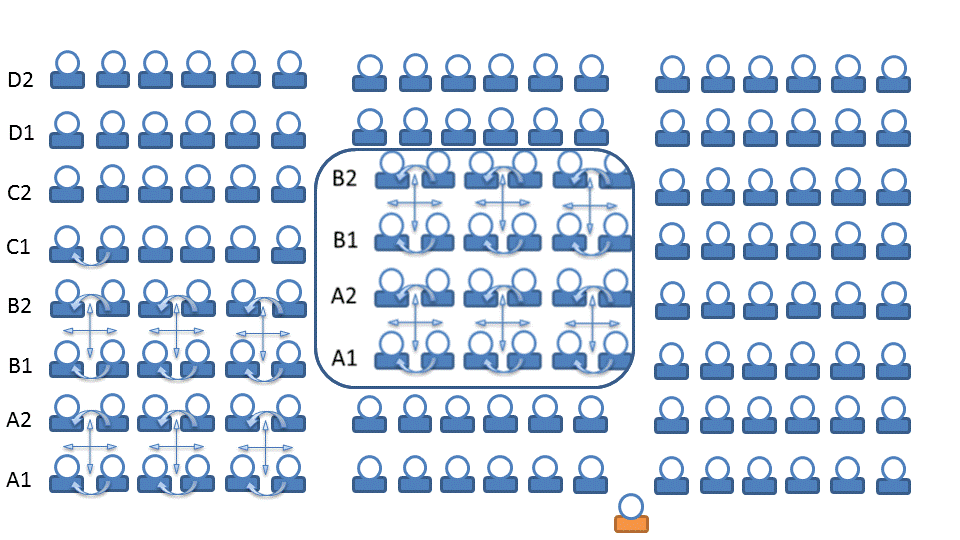Group work and team work
On this page
Analytical Teams
Students are put into groups, and each member is assigned a role. Each role is a component of a complete analysis (i.e. Arguments for, arguments against, examples, opinions, etc.).
Promotes: critical and creative thinking, problem solving, learning how to learn
Teaching Technique 06: Analytic Teams video © The K. Patricia Cross Academy.
Online Teaching Adaptation 06: Analytic Teams video © The K. Patricia Cross Academy.
Buzz Groups
Students brainstorm or discuss a question or problem in small groups.
Promotes: analysis and critical thinking, problem-solving
Buzz Groups can be done in large auditoriums or regular classrooms with very little preparation. The main benefit of buzz groups is that you can rapidly create group configurations of four so that the students are immediately engaged in responding to questions or problems you present throughout the class. By simply calling out assigned lettering and numbering of rows, students can conveniently identify which group they belong to so they can begin dialoguing with each other quickly with minimal confusion or delay.

Jigsaw
Students master content in small “expert” groups then reform into new groups (with one person from a different expert group) and teach each other what they learned in their previous groups.
Promotes: analysis and critical thinking, learning how to learn
- About Jigsaw technique (SALTISE).
- Jigsaw active learning activities (SALTISE).
Jigsaw Teaching Technique – Video & materials (K. Patricia Cross Academy).
Teaching Technique 04: Jigsaw video © The K. Patricia Cross Academy.
Online Teaching Adaptation: Jigsaw video © The K. Patricia Cross Academy.
- Using Jigsaw with Texts (Social Science) – Video (Harvard University).

